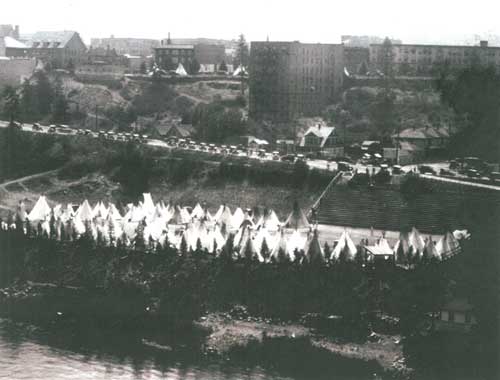Interdependent Relationships in Ecosystems
Interdependent Relationships in Ecosystems
Grade Level:
3
Scope & Sequence:
Interdependent Relationships in Ecosystems
Goal:
Construct an argument with evidence that in a particular habitat some organisms can survive well, some survive less well and some cannot survive at all. Evidence can include needs and characteristics of the organisms and habitats involved. The organisms and their habitat make up a system in which the parts depend on each other.
Objective:
For any particular environment, some kinds of organisms survive well, some survive less well, and some cannot survive at all.
Background Knowledge / Cultural Concept
- Habitat
- Interdependence
- Producers/Autotrophs
- Consumers/Heterotrophs
- Food chain/webs
- Photosynthesis
Spokane Tribal Values
- Honorable Harvest
- Respect( ṕut?em salish word, check with language pg.93 of dictionary)
- Land-Environment
- Relationships
- Value of life, take only what is needed, use all of what is taken
Vocabulary
- Interdependence – ntk̓ʷels
- Trait
- Variation
- Camouflage
- Adaptation
- Niche
Lesson Plan
Teacher will discuss/define animal adaptations, include local animals, examples and non-examples of adaptations
Stories:
- How animals got their tails.
- How the fly saved the river.
- How chipmunk got their stripes.
- Why Spider has such long legs.
- Frogs all over the world.
Students will participate in one of the Animal Adaptation games.
Teacher will introduce animal habitats and niche.
Students will choose a local animal from a given list to research and design a shoebox habitat, or create poster, life cycle timeline, story, play or skit to present to class that will include animals’ food and water sources, shelter, and the flora and fauna of the habitat. Must be creative and make the individual parts of the shoebox habitat.
Teacher will create a cause and effect chart to indicate responses to habitat changes and the adaptations of the animals.
Rehearse scenarios that demonstrate adaptive changes in animals as environmental changes/conditions occur.
Assessment:
- Periodic Cooperative group assessments
- Project/presentation
- Extra credit for enrichment activity
Enrichment:
Give 4 habitats and have students create an animal that is adapted to that specific habitat. Habitats can be alien, futuristic, present day or past.
Materials Needed:
- Project Wild Trait Game
- Build a Habitat Game
- Animal Adaptations Game
- 50+pics
- Food web/chains
- Storyteller for animal traits
- Songs (check with Bob)
- Dances
- List of local animals and habitats
- Shoebox, Poster, life cycle timeline,
Story, Play or skit - List of books to use as resources*
Activity:
- Story, song and dance
- Interactive Games and Scenarios
- Create Shoebox, poster, life cycle timeline, story, play, or skit
- Present to class
- Cause and effect chart
Lesson Assigned To:
NGSS
- LS4.C
- 3-LS4-3
Common Core Standards
RI.3.3
RI.3.2
SL.3.4
W.3.2

